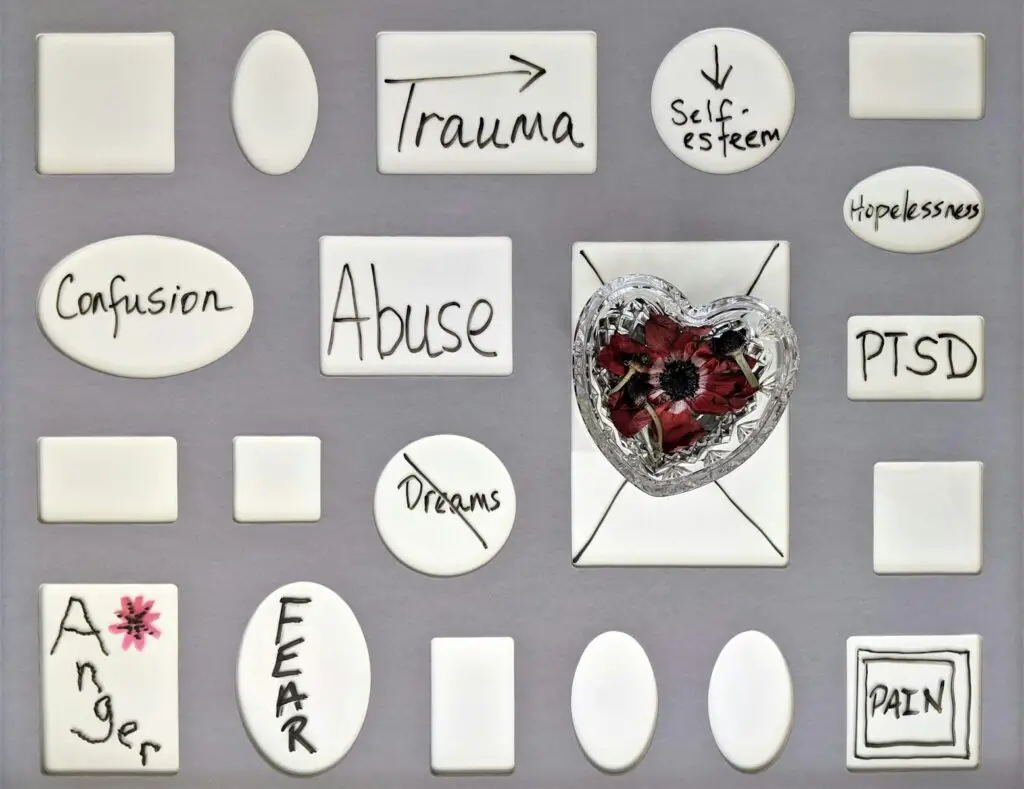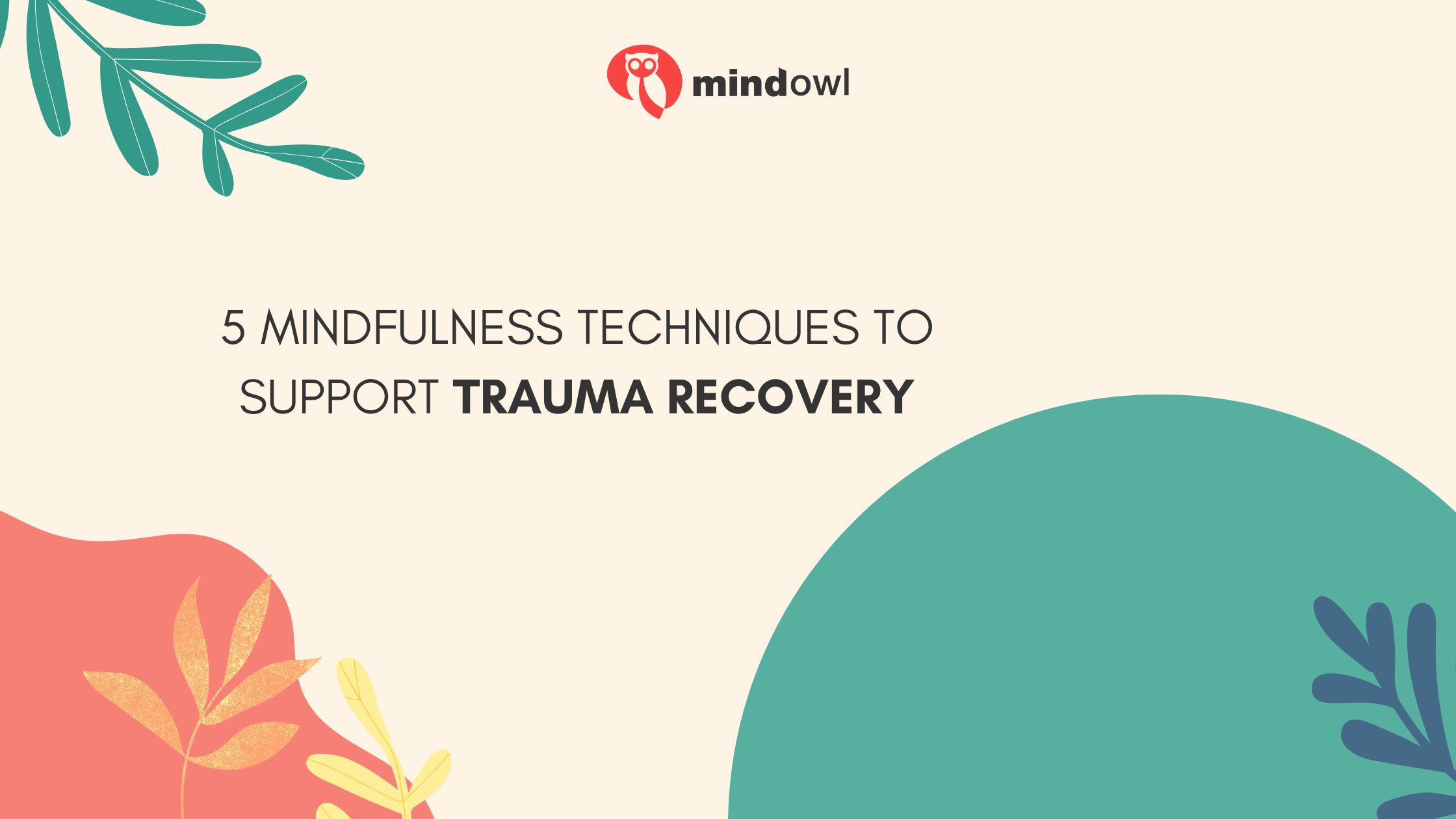According to the National Council for Emotional Wellbeing, at least 70% of adults have experienced at least one traumatic event in their lifetime. Trauma can come from many different sources, such as abusive parents or medical abuse, and it can significantly impact health, happiness, and the way you live your life.
Trauma is chronic stress and emotional distress caused by a stressful or frightening event in your life. Trauma can come from a singular event (such as a car accident) or numerous occurrences (like several months or years with an abusive spouse). Therapy, closure, and mindfulness can provide better ways to return to life after a traumatic event.
How Trauma Affects Us
Trauma can cause a severe physical and emotional response in many adults. It comes from the mind and body trying to protect themselves in response to stressful events, but it negatively affects daily living for many individuals.
Mental Effects
Trauma can alter our behaviours and cause significant mental illness after the event has occurred. Symptoms such as panic attacks, addiction, antisocial behaviours, relationship problems, self-sabotaging behaviour, depression, anxiety, flashbacks, mood swings, nightmares, and paranoia are quite common after a traumatic event. Conditions like PTSD or depression can even lead to self-harm and suicide when untreated.
Physical Effects
Traumatic events can cause physical symptoms as well, such as insomnia, increased risk of a heart attack or stroke, migraines, sex drive changes, nausea, vomiting, diarrhoea, heart palpitations, inflammation, immune system problems, and appetite changes. These physical changes often combine with mental symptoms to interrupt daily living.

The Importance of Mindfulness
Mindfulness allows you to practice awareness of your current surroundings and mental state to ground yourself and avoid destructive physical or mental practices. It aims to calm the body and bring yourself to reality without worrying about judgment or reaction. There are many ways that mindfulness can help with trauma symptoms, particularly with certain techniques.
- Be Present
It can be easy, especially when you have trauma, to lose yourself in your mind or the past. Practising mindfulness means being present in the moment. What is happening around you? What are you doing at the present moment? Ground yourself by focusing on your breathing, and acknowledging objects, sights, smells, and textures around you. This can help you focus on the present.
- Listen to Your Body
Your body will tell you when your stress is too much. If sitting still causes symptoms to worsen, keep yourself busy or active. If too much exercise or movement is tiring, relax with an entertaining TV show or your favourite music album. Learn your triggers and avoid them as much as possible; have an exit plan for unexpected triggers.
- Make a Safe Space
You should have a designated safe space for bad days or relaxation sessions. Creating a mood journal can help you identify negative thoughts and feelings to help release them. Acknowledge that you have negative thoughts, but don’t let them linger. Create a space that is comforting to you by filling it with grounding objects such as comforting textures, calming plants, and scented candles that fill you with serenity. A safe space will look different for each person; learn what comforts and grounds you.
- Connect to Others
Trauma can fester when you’re alone with your thoughts. Independence is good to practice, but a support system is very important as well. Surround yourself with supportive friends, family, or partners to help you on worse days. Mental health can improve when you are part of a support system for them as well. Finding the right therapist and therapy program such as cognitive behavioural therapy (CBT) can significantly change the way you handle your trauma response.
- Exercise and Relaxation
Learn the balance of exercise and relaxation. Exercise can help with anxiety and restlessness, and can give adrenaline and anger a place to release. However, knowing when to rest your mind and body with a calming activity is crucial. Find the balance that works for you and your trauma symptoms.
Finding Closure
While closure isn’t always possible in many traumatic situations, there are some cases where closure can happen. In these cases, it may be ideal to pursue. Closure can look like many things, such as writing out an angry letter to an abusive ex that you don’t send, joining a sexual assault support group, or reaching out to other family members of a deceased loved one. You may even benefit from pursuing legal action, like after a car accident or medical negligence. Many lawyers specialize in various accidents and injuries and can help you with a potential case. Searching locally for attorneys with terms like, ‘nursing home abuse lawyers in Chicago’ or ‘car accident attorneys in New York’ can help you find legal help that meets your needs.
Conclusion
Trauma is a serious emotional and physical response to distressing events. Trauma can manifest in the mind and body in many ways, making life difficult or sometimes impossible on certain days. Practising mindfulness with grounding techniques, support systems, and therapy can help alter how we cope with these symptoms. In some cases, finding closure through reaching out or pursuing legal action may be beneficial.
MindOwl Founder – My own struggles in life have led me to this path of understanding the human condition. I graduated with a bachelor’s degree in philosophy before completing a master’s degree in psychology at Regent’s University London. I then completed a postgraduate diploma in philosophical counselling before being trained in ACT (Acceptance and commitment therapy).
I’ve spent the last eight years studying the encounter of meditative practices with modern psychology.

